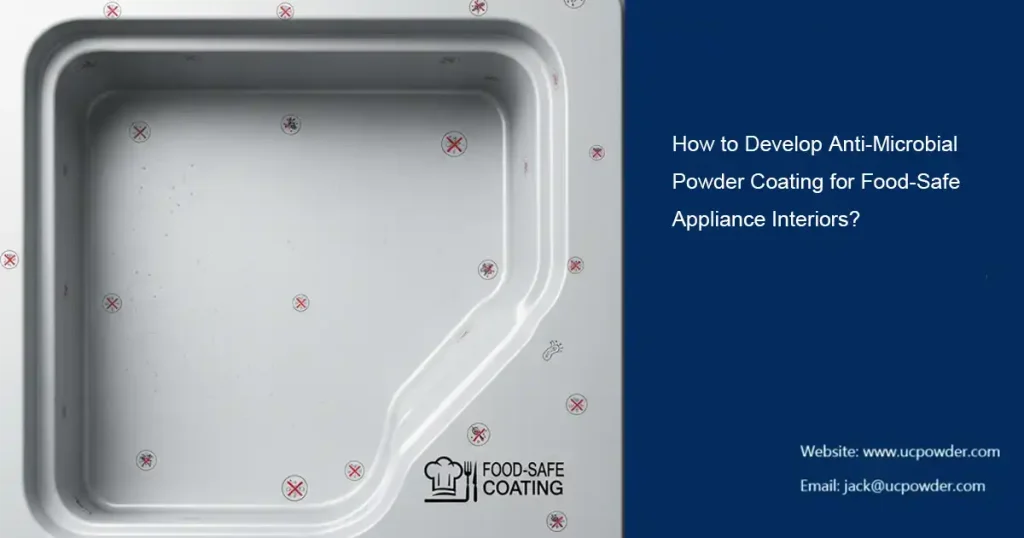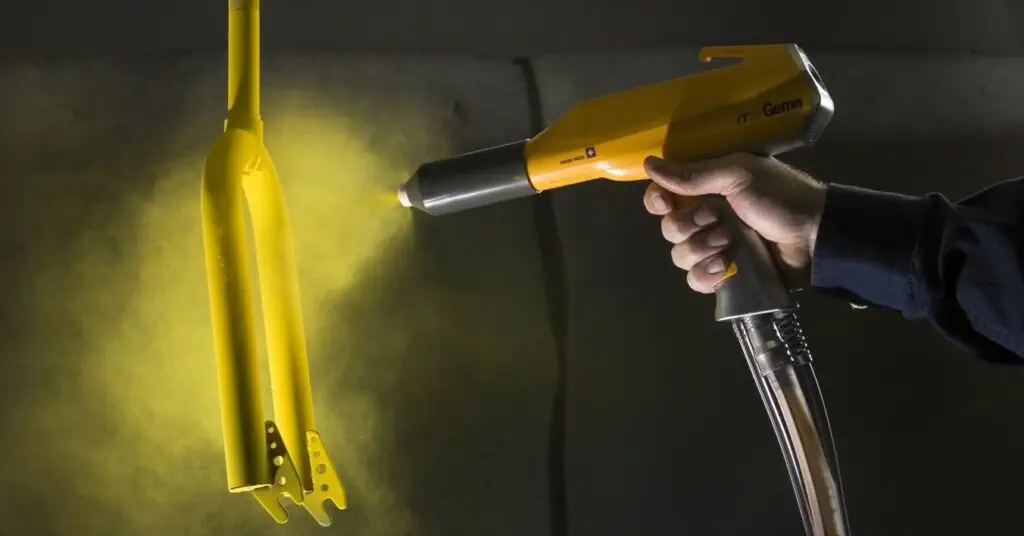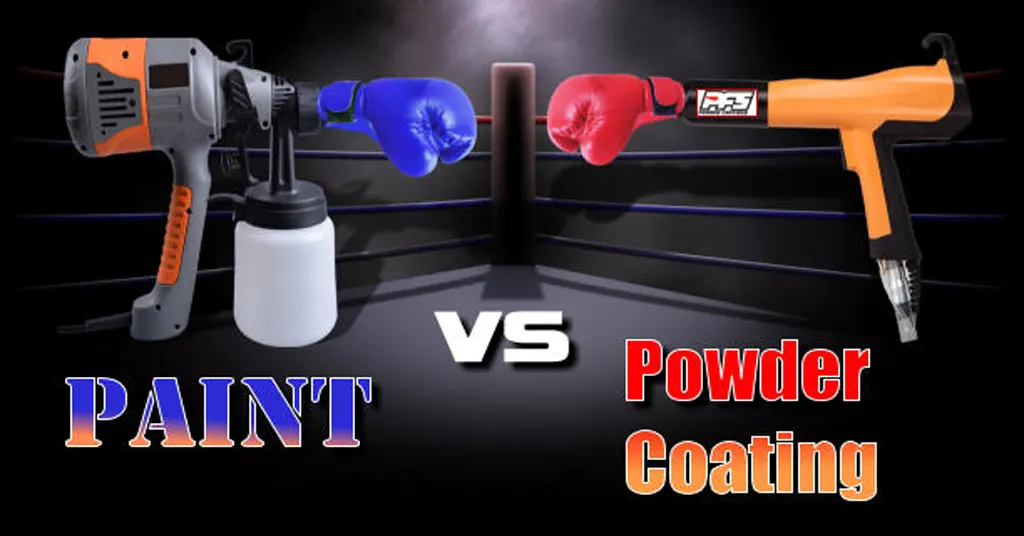How to Develop Anti-Microbial Powder Coating for Food-Safe Appliance Interiors?
In the modern home appliance manufacturing industry, food safety and hygiene are the focus of common concern for consumers and manufacturers. The interior surfaces of home appliances such as refrigerators, microwave ovens, and ovens need to prevent bacterial growth to ensure a hygienic environment for food storage and handling. Antimicrobial powder coatings provide long-term protection for the interior of food contact appliances by inhibiting the growth of bacteria such as Escherichia coli, Salmonella, and Staphylococcus aureus. As a professional powder coating manufacturer, we are committed to developing antimicrobial coatings that meet food safety standards such as FDA 21 CFR 175.300 and EU No. 1935/2004. This guide will detail how to develop such coatings, covering material selection, formulation design, manufacturing processes, testing verification, and cost control, and provide actionable suggestions.

A step-by-step guide to developing antimicrobial powder coatings
1. Choose a food-safe antimicrobial
Selecting an antimicrobial agent suitable for food contact powder coatings is at the heart of the development process. The following is a detailed analysis and recommendation of several common antimicrobial agents:
Silver Ion(Ag+):
- Advantages: Silver ions have a broad spectrum of antibacterial properties, effective against both Gram-positive and Gram-negative bacteria, with an antibacterial effect of more than 99.9% (tested according to ISO 22196). It has high chemical stability and is suitable for long-term use.
- Application suggestions: The recommended addition concentration is 0.5%-1.5% to balance cost and effect. Silver ions can be incorporated in the form of nanoparticles, and uniform dispersion must be ensured to avoid agglomeration.
- Note: Silver ions are expensive and the budget needs to be evaluated. Make sure the supplier provides silver-based antimicrobial agents that meet food contact standards (such as EPA or EFSA approved models).
Zinc Oxide(ZnO):
- Advantages: The price is about 30%-50% lower than that of silver ions, it is effective against a variety of bacteria and fungi, it is highly safe, and it is widely used in food contact materials.
- Application suggestions: The addition concentration is 1%-2%, and it can be incorporated through micron or nano particles. ZnO has good stability when cured at high temperature (180°C) and is suitable for home appliance coatings.
- Note: The antibacterial effect of ZnO is slightly lower than that of silver ions, and the performance needs to be improved through formula optimization.
Quaternary ammonium salt(QACs):
- Advantages: Fast antibacterial speed, especially suitable for inhibiting common foodborne bacteria such as Staphylococcus aureus. Moderate cost, easy to combine with resin substrate.
- Application suggestions: The recommended concentration is 0.8%-2%, which can be incorporated through microencapsulation technology to improve the stability of antimicrobial agents in the coating.
- Note: The migration safety of QACs in food contact environments needs to be verified to ensure compliance with EU 10/2011 standards.
2. Antibacterial powder formulation design and substrate selection
Polyester-based powder coatings:
- Features: High temperature resistance (up to 200°C), chemical resistance, smooth surface, suitable for refrigerator linings and microwave oven linings.
- Advantages: Provides long-term durability, easy to clean, and meets food contact surface requirements.
- Formulation suggestions: Choose polyester resins with low crosslink density (such as DSM’s Uralac series) to ensure that the curing speed is not affected after the antimicrobial agent is incorporated.
Epoxy-polyester hybrid substrates:
- Features: Combines the adhesion of epoxy resins with the weather resistance of polyesters, suitable for home appliance interiors that require high mechanical strength.
- Advantages: Strong corrosion resistance, suitable for long-term exposure to moisture or acidic food environments.
- Formulation suggestions: The recommended epoxy/polyester ratio is 50:50, and 1%-2% leveling agent (such as BYK-360P from BYK-Chemie) is added to ensure a smooth surface.
Food-grade additives:
- Add matting agents (such as silica) to reduce surface gloss and enhance the visual effect of home appliance interiors.
- Use food-grade pigments such as iron oxide or titanium dioxide to ensure compliance with FDA requirements.
Operational recommendations:
- In the early stages of formulation design, use differential scanning calorimetry (DSC) to test the thermal stability of the antimicrobial agent and the substrate to ensure that there is no degradation during the curing process.
- When testing the formulation in the laboratory, it is recommended to use a small batch of 10-20 grams of samples for spraying tests to evaluate the appearance and antimicrobial effect of the coating.
- Ensure the chemical compatibility of the antimicrobial agent with the substrate to avoid yellowing or cracking of the coating due to the addition of the antimicrobial agent.
3. Optimize the manufacturing process of antibacterial powder coatings
The production of antimicrobial powder coatings requires precise process control to ensure uniform distribution of the antimicrobial agent and overall performance of the coating. The following are the detailed manufacturing steps:
Raw material pretreatment:
- Premix the antimicrobial agent with raw materials such as resin, curing agent, pigment, etc., and use a high-speed mixer (speed 1000-1500 rpm) to mix for 3-5 minutes to ensure initial uniformity.
- Check the antimicrobial particle size, and it is recommended to use particles less than 5 microns to improve dispersibility.
Extrusion and grinding:
- Use a twin-screw extruder (temperature setting 90-110°C) to melt and extrude the mixture to ensure that the antimicrobial agent is evenly integrated into the substrate.
- After extrusion, cool and break into flakes, and then use a jet mill or pin mill to grind to a particle size of 10-50 microns, which is suitable for electrostatic spraying.
Curing process:
- The recommended curing temperature is 160-180°C and the curing time is 10-15 minutes to avoid high temperature destroying the activity of the antimicrobial agent.
- Use an infrared curing oven or convection oven to ensure uniform temperature and prevent local overheating of the coating.
Spraying and coating thickness:
- Use electrostatic spraying equipment and set the spray gun voltage to 60-80 kV to ensure uniform adhesion of the coating.
- Control the coating thickness to 50-100 microns. Too thin may reduce the antibacterial effect, and too thick will increase the cost and affect the adhesion.
Perational recommendations:
- Perform a pilot run before production to verify the stability of the antimicrobial during extrusion and curing.
- Use a laser particle size analyzer to check the powder particle size distribution to ensure that more than 90% of the particles are in the 20-40 micron range.
- Calibrate the spray equipment regularly to avoid uneven coating due to voltage instability.
4. Food safety and antimicrobial powder coating performance testing
After developing an antimicrobial powder coating, comprehensive testing is required to verify its performance and safety. The following are key test methods:
Antibacterial performance test:
- Test standard: Test the inhibition rate of the coating against Escherichia coli, Staphylococcus aureus and Salmonella according to ISO 22196 or JIS Z 2801.
- Test method: Expose the coating sample to the bacterial suspension and measure the bacterial reduction rate after 24 hours of incubation. The goal is a bacterial reduction rate of more than 99%.
- Long-term test: Simulate the use environment of household appliances (such as high humidity and repeated cleaning) to test the sustainability of the antimicrobial effect (the recommended test cycle is 3-6 months).
Food safety migration test:
- Test standard: Test the migration of antimicrobial agents in food simulants (such as 3% acetic acid, 10% ethanol) according to EU Regulation 10/2011.
- Test method: Soak the coating sample in the simulant (40°C, 10 days) and use high-performance liquid chromatography (HPLC) to analyze the concentration of migrants to ensure that it is below the regulatory limit.
Mechanical properties test:
- Adhesion test: According to ASTM D3359 (cross-cut method), ensure that the adhesion of the coating on the substrate reaches 4B or above.
- Abrasion resistance test: According to ASTM D4060, use Taber abrasion tester to test the weight loss of the coating after 500 cycles, with the target less than 50 mg.
- Corrosion resistance test: According to ASTM B117, salt spray test (1000 hours) is carried out to ensure that there is no obvious corrosion of the coating.
FAQs About Antimicrobial Powder Coating
Yes, our antimicrobial powder coatings can be customized for food contact surfaces such as refrigerators, microwaves, ovens, etc. By adjusting the substrate and antimicrobial concentration, we can meet the specific needs of different appliances. Contact us now

Erik
Doctor of Chemical Engineering, expert in the field of powder coatings, with over 20 years of professional experience in the research and application of powder coatings
Latest news
Have Anything To Ask Us?




